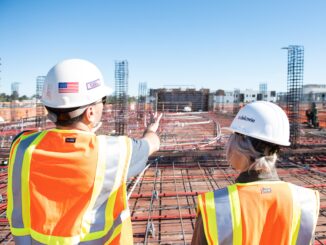People quite often have a slightly romantic view of a farm, especially in certain parts of the country, where it is associated with historical and pioneering families and generations of people working on the land.
The reality is that most farms, whatever their size, are highly efficient businesses, that have a very distinct type of work environment, an environment that unfortunately lends itself to many significant work hazards and potential dangers.
Types of farms
The size of a farm is in many ways not that important in relation to safety issues, but it is important to acknowledge that it is estimated that the average size of a farm is only 464 acres (2023)in the USA.
Farms can be focused on producing a number of different products, the most common ones being beef, dairy, sheep and poultry, a swell as many different crops, vegetables and fruits.
Specialist farms also exist which focus on other types of animals and insects, such as bees, fish and buffalo.
Some farms focus exclusively on different types of crops, the most common ones being corn, soybean and wheat. There are also specialist farms in these areas which focus on different types of fruits, nuts and vegetables.
The reason it is important to understand the different types of farms is at each type generates its own different sense of risk, which needs to be understood and managed in order to make sure the work environment is as safe as it can be.
Farm Land
Depending upon the geographical location, farms can either be on land that is flat for as far as the eye can see, or land that is quite hilly and mountainous. Land that is flat can cause problems in terms of lack of concentration and complacency, whilst land that is mountainous can present problems in terms of safety for vehicles that need to navigate it.
Whilst most farmland will contain some buildings on it, the majority of farming takes place on land where there is no building to provide shelter, or any type of windbreak.
This means that whatever the type of land, or the type of product being formed, the land itself will be open to all the elements all year round, with little or no protection to the people working there.
Farming is one of those industries that is at the mercy of different climate conditions, and the people working there have to be aware of the different types of risk and dangers that this environment brings with it.
Uniformity
Many workplaces such as factories and warehouses are able to plan their structure and internal environment as they choose, and often can do it in such a way as to minimise risks and create a safer workplace.
Most farms and agricultural businesses don’t have that luxury. They have to themselves adapt to the needs of the product and the needs of the land that they are using to cultivate whatever it is they are growing or breeding.
Family
Many farms are traditionally owned or managed by families, and given the nature of the work most family members will be involved from an early age.
In addition, the farm will have to act as both a business and a home at the same time, which can generate real problems in terms of personal and employment boundaries.
These have to be acknowledged and processed, which can sometimes be a real challenge in itself. If they are not then the overlap of domestic and business activities can present real problems in terms of health and safety activities.
It is also fair to say that national or local regulation of the risks associated with farming can vary widely. This is sometimes for political reasons, other times because it can be in practise difficult to regulate the nature of a farming environment.
For all these reasons it is even more important that whoever is managing or running the form is aware of all the distinct hazards and dangers that can occur as a result of the work environment, and put in place protocols and policies to make sure that it is as safe as can be.


